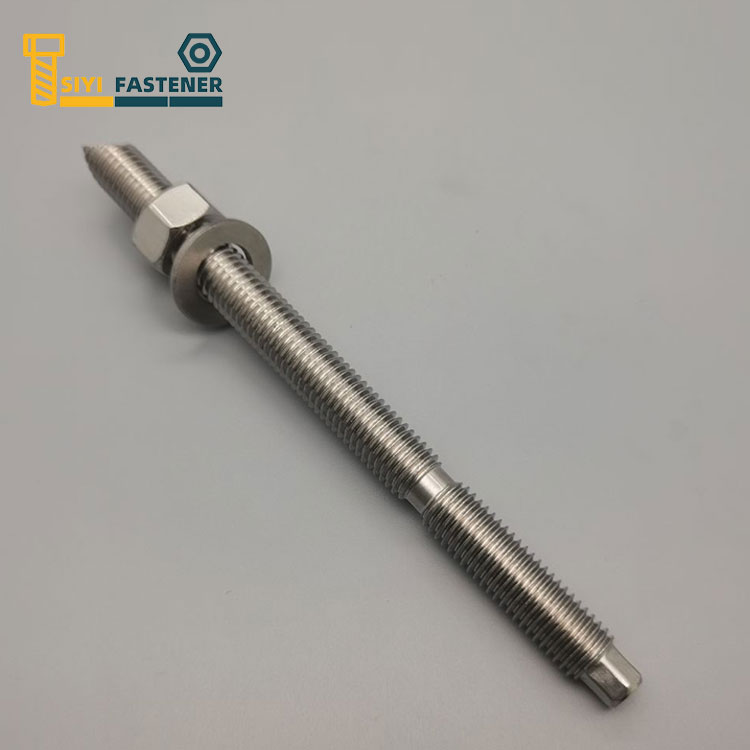Process flow and principle of
chemical anchor
1. Process principle: connect the stainless steel chemical anchor bolt and the hole wall with the synthetic resin mortar to form the entire anchor rod, anchor the base and the anchor object, in order to achieve the purpose of fixing the components or improving the anchoring capacity, and the component load.
2. Process flow: drilling, cleaning the hole, placing the reagent tube, drilling in the stainless steel
chemical anchor gel process, hardening process and fixing the object.
(1) Drill: According to planning requirements, the position must be determined according to the distance from the drawing and the distance to the edge, and the diameter and depth of the hole must meet the planning requirements.
(2) Clean the hole: Use a pneumatic tube to remove the dust floating in the hole and keep the hole clean.
(3) Place the medicine tube: Insert the medicine tube into a clean hole, and only use the rubber tube when the resin can move like honey at room temperature.
(4) Drilling of stainless steel
chemical anchor bolts: Use an electric drill to tighten the stainless steel chemical anchor bolts until the reagent comes out. Electric drills usually use hammer drills or hand drills with a drilling speed of 750 rpm. When screwing in the stainless steel chemical anchor, the reagent tube will break, and the resin, curing agent and quartz particles will mix and fill the space between the stainless steel
chemical anchor and the hole wall. At the same time, stainless steel chemical anchors can drill wet holes, but the water must be drained, and the waiting time for the gel process and the hardening process should be doubled.
(5) Gel process: stick to the equipment and don't move it. The chemical reaction time shows the manufacturer's supply parameters.
(6) Reinforcement process: remove the equipment and wait for the agent to harden, the chemical reaction time can also be seen from the provided parameters.
(7) Fixing the object: After the adhesive is completely hardened, add washers and hexagon nuts to fix the object.

